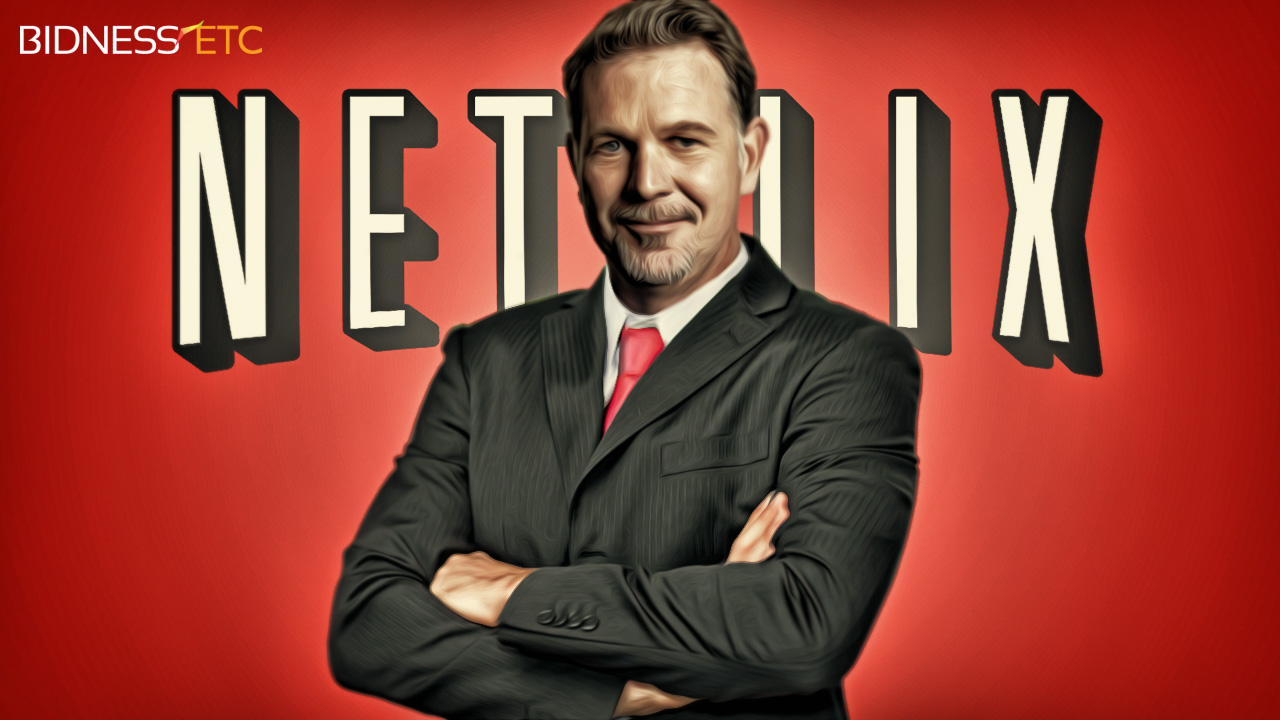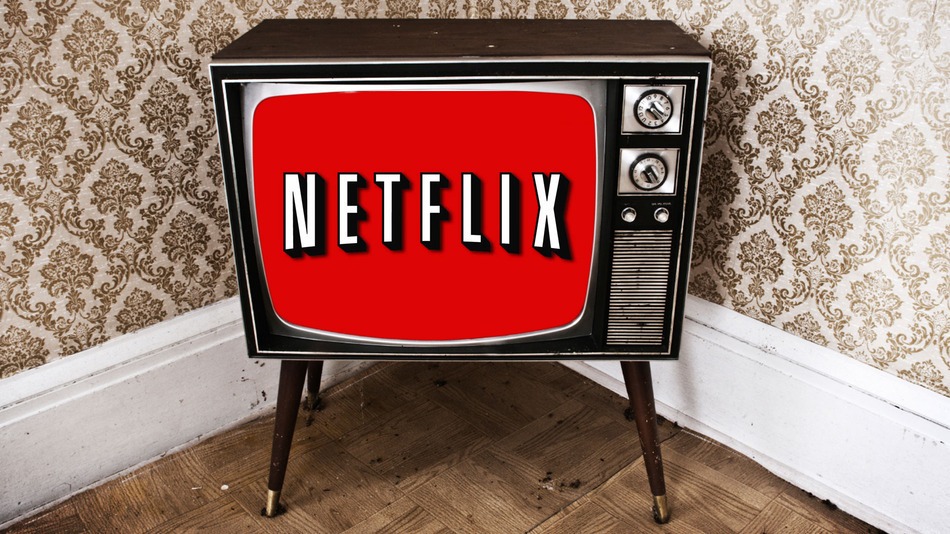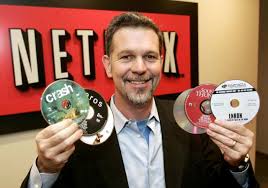“Our hearts demand change”: Netflix founder and CEO Reed Hastings - under the heading “Business Person”

The “Business Person” heading tells the readers of “Megamind” about what stories and facts surround the most prominent IT entrepreneurs from around the world. The value of their companies sometimes exceeds any reasonable limits. We will not be limited only to the “new wave” of businessmen and we will also tell about those who are called the “old school”.
Today, life and history of Reed Hastings, the founder and CEO of Netflix , is a close-up. Netflix has been around for almost 20 years. Since 2008, the number of Netflix online cinema subscribers has reached 75 million. The company's valuation is almost $ 40 billion. The state of Hastings himself is estimated at $ 1.3 billion.
')
He was a military man, a teacher, and an engineer. However, the turning point in the life of Hastings was the transition from the status of an engineer to the status of the founder and CEO of his first company.
Family and education
Reed Hastings was born in 1960 in Boston, Massachusetts. His parents are Joan Emory and Wilmot Hastings. In 1981, Hastings joined the United States Marine Corps, a little later going to the Peace Corps. In parallel with his military career, Reed was engaged in education - in 1983 he graduated from Bowden College and before 1985 he taught higher mathematics in Swaziland.

After serving, Hastings decides to continue his education - and, although by his own admission, he could not enroll at the Massachusetts Institute of Technology, a young man was accepted into the equally prestigious Stanford University. In 1988, Reed received a Master of Computer Science degree.
experience
The young man received his first job in the specialty at Adaptive Technology, where he developed an application for debugging software. “In 1990, I worked with Audrey Macklin, who was the company's general director at the time. I learned to appreciate her from her. I realized that it was better to make one good product than two mediocre ones, ”said Hastings.
In 1991, Hastings left the company to establish his own - Pure Software , specializing in diagnostic and troubleshooting software.
First pancake
Deciding to open his business to Reed was not difficult. Hastings says that after hitchhiking in Africa with ten dollars in his pocket, he is no longer afraid of business adventures.
However, he was clearly not ready for the success that the company was waiting for. Experience as an engineer meant little in this situation.
“As the number of employees grew (from 10 to 40, then to 120, 320 and 640), I found that the boat began to go to the bottom, and the water was at the level of my head. I was kayaking at the time. Every kayaker knows that if you focus on a problem, the likelihood of being seriously in danger increases dramatically. Therefore [in business] I focused on what I wanted to achieve and did not listen to skeptics, ”said Hastings.
However, he understood that his experience in kayaking was not enough for the post of general director: “I tried to dismiss myself [from the position of CEO] twice. I was losing confidence. ” The board of directors was categorically against such a decision and forced Hastings to remain in that post.
“Every year, the company doubled its revenue, but my transformation from engineer to CEO took place only in 1995, when Morgan Stanly brought the company to an IPO.
In 1996, Pure Software announced a merger with Atria Software , which planned to integrate its software with its development tools for complex software products. According to Hastings, together they had to change the approach to software development.
In addition, the companies wanted to develop a unified sales management strategy. However, problems arose with this - especially when the top sales professionals left both companies.
The lack of management experience of Reed eventually led to the fact that in 1997 his Pure Software was swallowed by an industry giant - Rational Software . During the takeover, Hastings lost 42% of its shares. After some time, Reed left the company, and for two years wondered how to prevent such mistakes when managing the next startup.
Netflix
In 1997, Reed Hastings and his business partner Mark Randolph founded Netflix, a company that originally engaged in video rental, and in 2008 entered the era of streaming video. Today, the company claims to be the world's main online cinema.
The company collects and processes data about subscribers - to understand their preferences. Big Data in the case of Netflix is not just big data in the literal sense of the word, it is a combination of information and the latest analytical methods.
With the use of these methods, recommendatory service systems work, designed to predict what the client will like.
As soon as the streaming method became the main way to transfer content, companies became available additional data about customers, such as information about the time of day when customers prefer to watch movies, the time spent on choosing a movie and how often viewers interrupt viewing (independently, and because of the limitations of the network) - all this has become possible to measure and study.
It became obvious that all this affects the degree of pleasure from watching the video - when the client is constantly offered films that he will surely like. And satisfied users, of course, are more likely to renew their subscription to the service.
Not so long ago, Netflix started producing its own content. The diversification strategy also relied on data analysis - the model predicted increased user interest in hypothetical content, which would be directed by David Fincher, and Kevin Spacey would play the main role. This is how the “ideal series” appeared - the notorious “House of Cards”, which really “shot”. The company, inspired by success and armed with a working model, decided to continue diversification in this direction.

Netflix’s attitude to advertising has almost become the hallmark of this video service, Business Insider reports . Netflix is sure: the smaller the ads, the more subscribers the service will have. Thanks to restrictions on advertising, Netflix “saves” users 6 days of life a year.
Netflix has another “feature”. In January, Hastings said he was positive about sharing accounts between users. In his opinion, it’s normal when they exchange passwords and give each other access to accounts. He notes that many people who have used someone else’s account then themselves purchase a paid Netflix subscription.
"It's time to grow up"
At Netflix, Hastings managed to create a large team, avoiding chaos and bureaucracy.
The company has a principle: bad and even average results bring a generous payoff - and dismissal.
Netflix does not measure people by the number of hours worked. Stable high results even with minimum effort are rewarded with increased responsibility and salary.
In many companies, procedures are created to stop the chaos. No one likes them, but compared to chaos, they seem comfortable, and managers start repeating every day: “It's time to grow up.”
Clearly defined procedures and processes bring good results in the short term. This is a large market share, minimal need for thinking, few mistakes and high efficiency, a reduction in the number of curious innovators and rioters, rigorously optimized procedures for the market, and a reduction in flexibility.
Then the market changes due to new technologies or business models. The company is not able to adapt quickly, because employees very successfully follow existing processes, and the process orientation is recorded in the number of values.
And then there are three bad options:
1. Stay creative, but small, and therefore have less impact.
2. As you grow, avoid the rules and suffer from chaos.
3. Rely on processes to effectively implement the current model, but to undermine creativity, flexibility and the ability to thrive after a market change.
However, Hastings proposed a fourth option: to avoid the chaos associated with growth, relying not on rules, but on even more efficient people.
Then you can continue to work mostly informally, relying on self-discipline. It is this informality that opens the way to creativity and attracts creative people.
The main recipe: to increase the density of talent faster than increasing the complexity of the business. How? With the help of high rewards, attracting valuable people at the expense of the freedom to achieve a lot, and demanding respect to the culture of high efficiency.
Guilty without guilt
In July 2012, Hastings left a post on his Facebook page that triggered strong Netflix growth.
According to the US Securities and Exchange Commission (SEC), Hastings violated the rules for disclosing information. In that very post, he only reported that the cumulative time for watching videos on Netflix in June "exceeded 1 billion hours." The market reacted to this record by increasing the company's quotes by 6.2%.
Talking to Hastings, which has more than 200,000 followers on Facebook, was already not the first example of such behavior by top managers on social networks. The SEC rules really prohibit selective disclosure of information, because with this mechanism, company executives can easily manipulate investors.
However, later, in April 2013, the SEC recognized that top managers and officially authorized persons have the right to distribute corporate information in social networks.
Private-public
Reed Hastings lives in the San Francisco Bay Area. He is married. The couple have two children.

In 1995, USA Today published on the cover a photo of Hastings against the backdrop of his Porshe car. But now he has found another hobby. If the next time the publication puts his photo on the cover, Hastings will not pose on the background of the car. He will surround himself with a bunch of movie discs. His favorite film is "The Dark Resurrection"

In 2012, Hastings made a photo portrait of Kevin Ebosh as part of his FACES: TECH project.

Source: https://habr.com/ru/post/300762/
All Articles